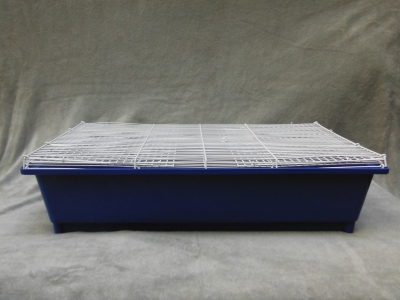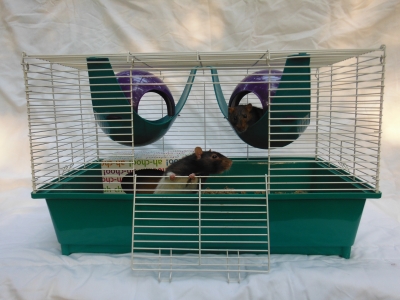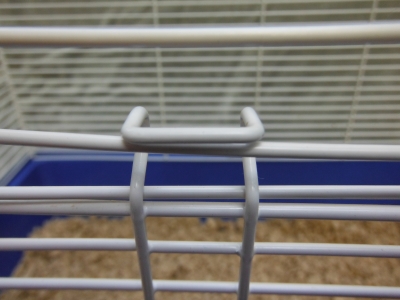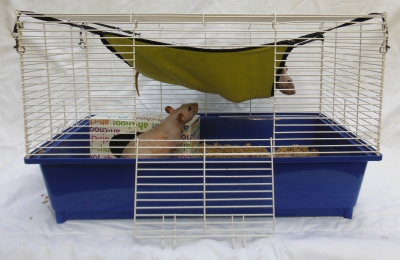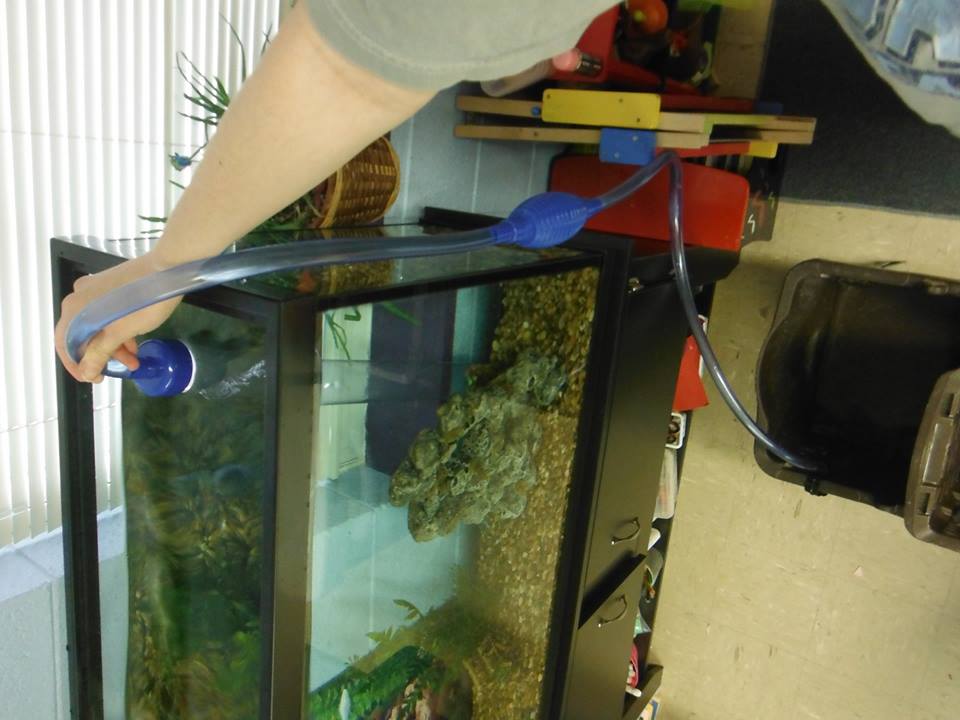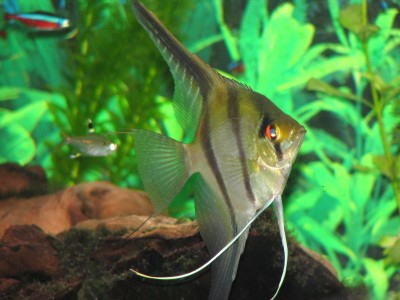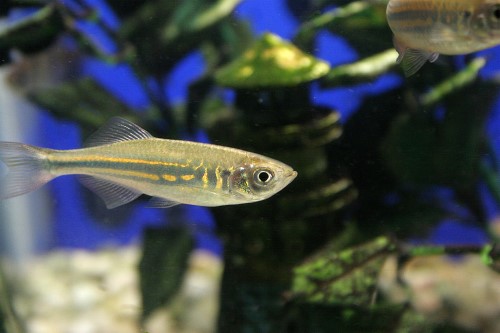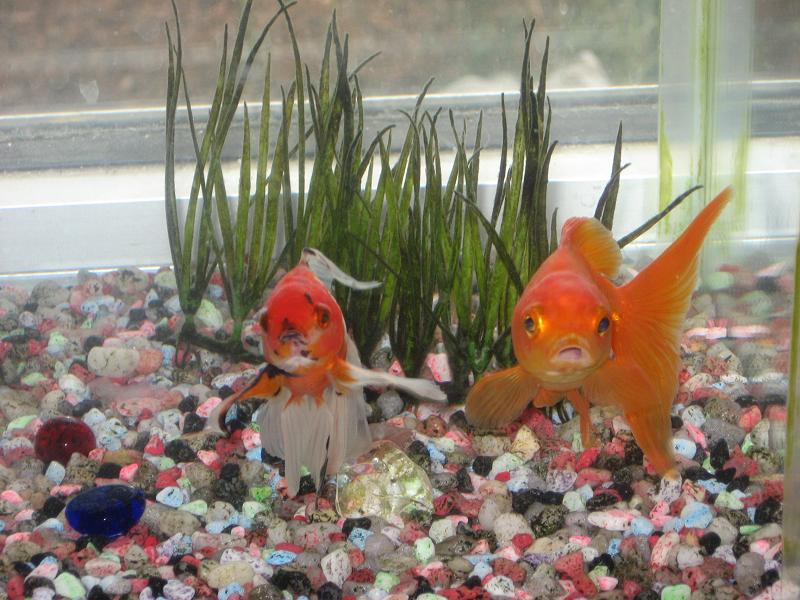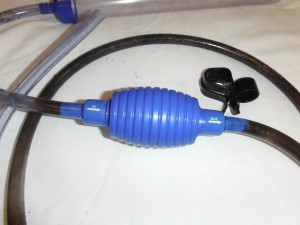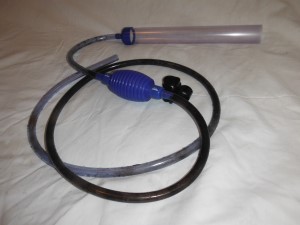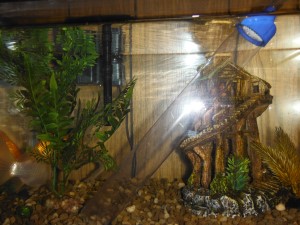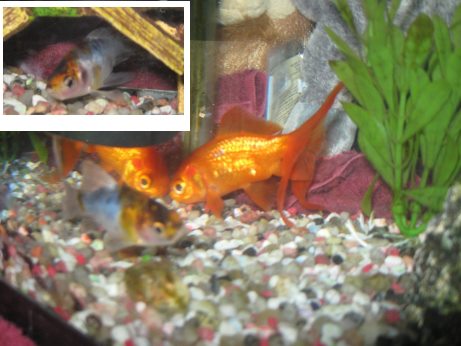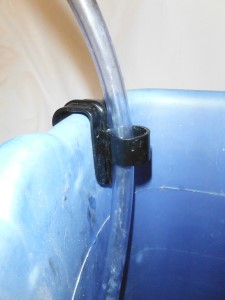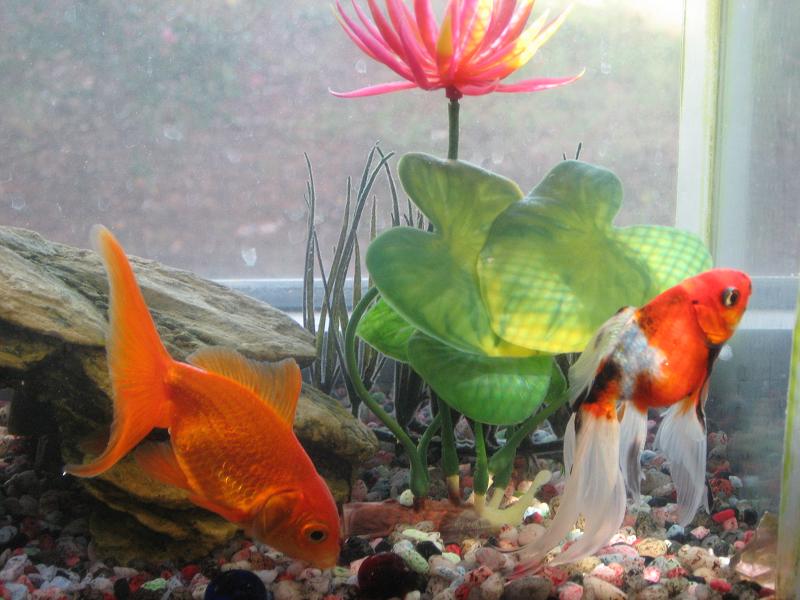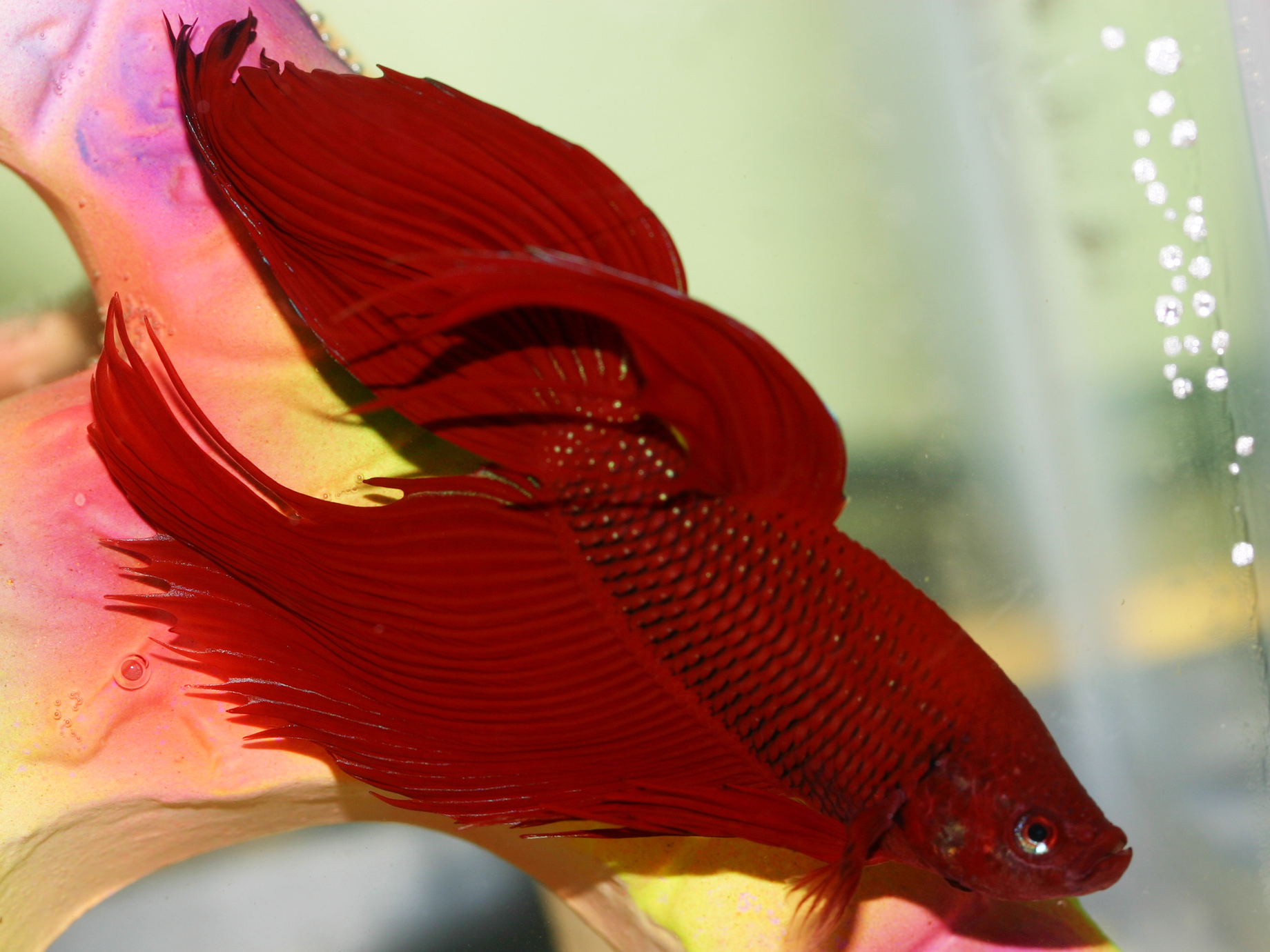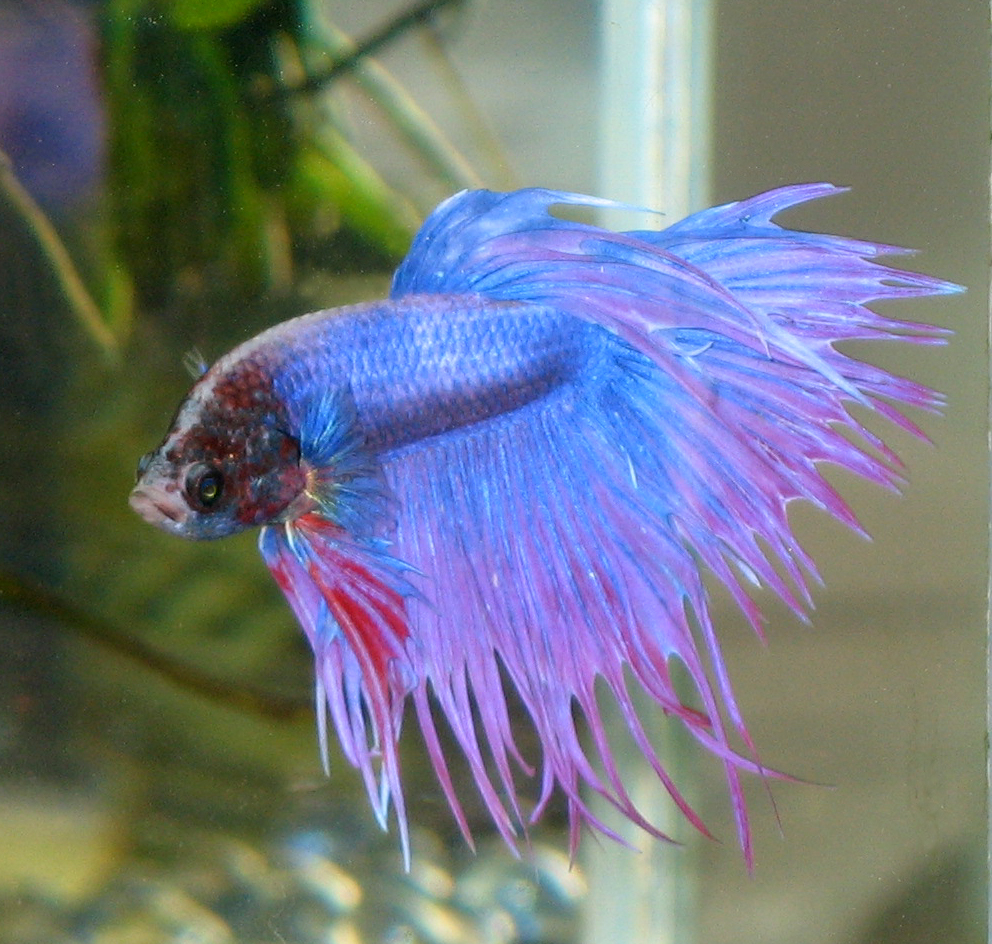Part One – The Housing Market
Be honest. When you read the title of this article, what came to mind? Did you see a bright orange or golden fish swimming around in a bowl? Maybe the bowl had some rocks and one plant in it, maybe it didn’t, but the point is that for most of the general public, that sort of image is what comes to mind. In fact, when I did a Google search on just the word goldfish in the images category, that very image wasn’t that far down on the image list:
Even in the suggestions bar, the goldfish bowl is one of the top three options. Right behind those yummy crackers and a collection of photos based on the types of goldfish, sits one word with the accompanying images: “Bowl.” For true goldfish lovers, this very idea causes a twinge of pain or sadness. Not many people really know why, since everywhere we look the human race is bombarded with the traditional image of a goldfish looking perky in the middle of a bowl that is usually devoid of any decoration what so ever. What is wrong with this idea? It is everywhere. Even Elmo from Sesame Street has a goldfish in a bowl! Well, as a goldfish owner for many, many years, let me tell you what I see when you say the word goldfish: I see a colorful fish, about the size of my hand, swimming around in a giant tank, full of plants, rocks and other interesting items to interact with.
Goldfish Are In The Carp Family
Surprised? Sadly, most people will be. As a society we are so bombarded with the bowl image that we have forgotten the origin of these beautiful fish. These guys belong in the CARP family. Sure, they’re on the small side, but they ARE carp. They belong in the same family as Koi, the same family as that fish someone’s uncle Joe just caught at the lake the other day. They were one of the first types of fish to be domesticated and in many years of breeding for beauty, we humans have forgotten the idea that these guys belong in ponds and large bodies of water. I am always saddened to be standing at the koi pond at Biltmore and hear visitors from ages five to fifty five point out the goldfish swimming among the koi and exclaim their surprise at the smaller fish being there. Yes, keeping goldfish in a pond takes a special climate and certain knowledge, but the truth is that a pond is where they are most happy and healthy.
Now, some of you are reading this and you just got a fish or are looking at a fish care book and are pointing at the image of a goldfish (or two or three) in a ten gallon tank or in a bowl and saying to yourselves, “This says you are wrong. This picture in this book, and the picture on my new tank from the fish store shows goldfish living like this. The tank even says it is for goldfish.” Check those items again. Chances are your ten gallon tank is called a “starter” tank and that image of the goldfish bowl probably has an unexpected caption or has a better explanation within the text.
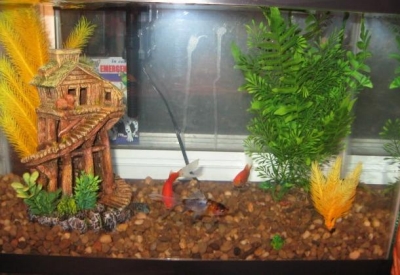
Three goldfish in a starter tank. Charon, Nix and Hydra check out their new accommodations after leaving the pet store. Though Charon will pass away from illness acquired at the store, Nix and Hydra will be transferred from this tank to their regular home in the 60 gallon tank in my classroom.
Researching Your Fish Care
I recently went to the library to do some research on additional food supplements for my goldfish, Nix and Hydra. Our library had only two books on the subject of goldfish, one for adults, and one for children. I checked out both, but for the purposes of this article, I will focus mostly on Goldfish: A Complete Pet Owner’s Manual, by Marshall E. Ostrow, since the children’s version was nearly identical in contents, only written for a younger reader. As soon as I opened the book I was horrified to see the image of a fish bowl with more than one fish in it, but on further inspection I relaxed a little, as the caption clearly stated there were TOO MANY fish in the bowl. Reading further, though it did describe how to set up a bowl for your goldfish, it emphasized that this was best only as a temporary residence, such as in instances of sickness, when a fish must be quarantined. Following that introductory chapter, the author chose to discuss only the setup of tanks, much to my relief.
Getting your goldfish a large tank is necessary for several reasons beyond allowing for proper growth and happiness. First of all, goldfish are awesome waste producers and too much waste in the tank can alter your water’s pH to a point that is dangerous for your fish. The smaller the tank, the faster this can occur, meaning you are constantly having to change out water to keep the balance in check, which can be a major stressor for your fish. Secondly, goldfish need a lot of oxygen in their water and the more surface area they have the better, as a small surface area lowers the exchange of oxygen and carbon dioxide, sometimes quite drastically. This is another reason I cringe at images of goldfish bowls, as most of those images show the water all the way at the top, where there is far less water surface area due to the small opening. If you are keeping a goldfish in a quarantine bowl, it is better to fill the bowl to the most round part. Even though this means less water and swim area, it gives them more surface area for oxygen.
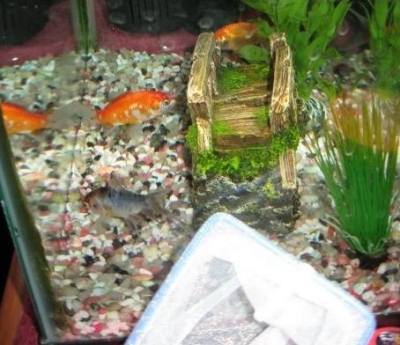
Charon, Nix, and Hydra inside a tiny 3.5 gallon tank used for transportation or quarantine. They quickly outgrew this tank and needed their 10 gallon starter tank for this purpose.
Now that we know goldfish need a lot of space, the next step is to figure out how big your tank should really be. There are many ways to calculate the size of your future aquarium, one of which is to say that one inch of fish equals one gallon of water. Here is where all those ten gallon tanks come in at the pet store. Measure them and think about it. Sure, having ten gallons means you could have two or three fish in there if they were about a month old and only one inch long. However, in one year your average goldfish could grow to be about five inches long. Your two fish would suddenly be very cramped and miserable, if they had managed to grow as normal. One of the major disadvantages to giving your goldfish less room than they need is that it will stunt their growth, something that can become painful over time, as their internal organs keep growing even if the rest of them does not. Should you decide to use a ten gallon tank as a starter tank, keep a close eye on the behavior of your fish. If they become less active or seem lethargic at the bottom of the tank, chances are they are already outgrowing the tank. Sometimes the easiest way to perk up your goldfish is to upgrade the size of their home.

Hydra, about, 6 inches long from nose to tail, watches through her tank as children read a book at circle time.
Measuring by inch means that you have to keep measuring and keep upgrading in order for your fish to be healthy and maintain their proper growth rate. I find it much more practical to think along the lines of what you will need in the future. My motto for goldfish is 50 gallons for the first fish and 10 gallons per fish after that. This seems like a lot and there are people who have managed to keep a fish mostly healthy in a smaller home. It certainly looks ridiculous when you put two small fish in a tank of such a massive size. The purpose of this plan is actually to keep things simple in the long run. Nix and Hydra are both comets, a longer, larger type of goldfish that is also one of the most common. When I bought them they were “babies” at about an inch long, but in ten years a comet can grow to be ten inches long. That is already a 20 gallon tank for two fish, if you are still calculating one inch of fish per gallon. Now, where are they going to swim? Most 20 gallon tanks are only about 24 or 30 inches long, so that doesn’t leave much wiggle room for a ten inch fish, not to mention the fact that bigger fish make bigger poops, so you need more than 20 gallons to help dilute that waste and make the situation livable.
A 36 gallon tank at my local pet store is about 20 inches long and 30 inches wide. Nix and Hydra would be happy for maybe a year, when they both reached five inches in length, at which point it is only a matter of months before they start to feel cramped. Once they reach the ten inch growth mark they will be able to line up, nose to tail and fill the length of their home, which doesn’t give them swimming space or the stimulation of exploration. Once you go past the 36 gallon tanks, your options for size start to become limited and you need to keep in mind that a captive comet goldfish can reach a maximum of 13 inches in length. Using a 50 gallon tank for one goldfish gives them 13 gallons of water for their full growth and that 36 gallon swimming space to keep them active and healthy, with an extra gallon left over for rocks and the rest. With a tank this size, another ten gallons per fish, even at their largest size, should be just fine, but keep surface area in mind. Your tank should have a nice long shape to it, rather than a boxy one. Not only does this spread out the weight of your tank (a 55 gallon tank usually weighs around 600 pounds!), it gives them more surface area and oxygen for their water. Plus, what fish doesn’t want play room?
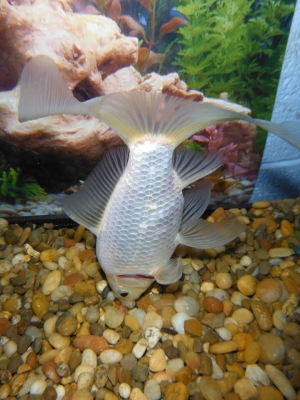
Nix, about 6 inches from nose to tail, foraging at the bottom of the 60 gallon aquarium he calls home.
Once you decide how many fish you are going to have, don’t just dash out and buy the first setup you see that meets the gallon per fish requirement. The next step to goldfish ownership is working out where you are putting your tank, because it is better to buy a tank to fit a location than to force a location to conform to your tank. There are many factors that go into tank placement, such as water temperature, available light sources, the size of your room, and the location of windows, outlets and furniture.
Probably the most important part of placing your tank is the actual floor under it. It is typically recommended that you put your tank near an outside wall, in a place that is structurally sound and able to take on several hundred pounds of regular weight. The floor in this location should be as level as possible, so that stress is not put on one part of the tank over another due to uneven weight distribution. With goldfish you are going to have filters and you will most likely have some form of bubbler, so having an outlet near the tank is a must. If you choose to use the lights on your aquarium, that will require even more power. Your tank should be kept away from the air vents in your room, to prevent sudden changes in temperature, and it should not be placed directly in front of the window for the same reasons, though some sunlight is acceptable and helpful, which I will discuss in another area of this series. Finally, the best place for your tank is in a low traffic area, where it cannot be bumped, bashed or cracked by random objects or people. Your fish will want to be interactive and will become a part of your family more than you realize, but they won’t be happy if they join you in the outside world.
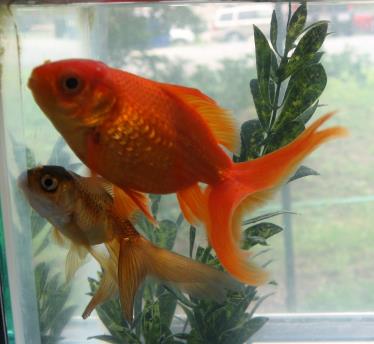
Neptune and Pluto catching some natural light in the corner of their tank near the window.
So, you want to get a goldfish. (Hopefully, since fish are schooling animals, you are actually thinking of getting two or three.) Now you have an idea about where that fish should live. It sounds like keeping a goldfish is something hard to do, but honestly it isn’t. Even though the cultural idea of a bowl has now been thrown out the window, these guys are still a lot easier to care for than fish who need constant monitoring when it comes to temperature, salt content, and all the other things that make keeping a fish much more complicated than anyone expects. Still, as simple as it is to keep a goldfish, we can’t just stop here. In later posts I will cover aquarium setup, care and feeding, and try and cover some of the most common types of goldfish out there.
If you can’t wait to get your next fish, I strongly suggest researching what I have yet to cover, but if you can wait, I’ll see you all next time, when I talk about “Moving In.”
Mirrani Houpe, our Small Animal Editor, has had rats since she took home her first little boy once they both completed the second grade. Since that time she has owned, rescued and bred many kinds of rats, from many backgrounds. She may not be a vet, psychology major, or scientist, but her babies have her very well trained when it comes to how to care for them. She is constantly working with her family’s veterinarian to come up with new and innovative ways to love and care for the most often misunderstood rodent in the pet world. You can e-mail her at mirrani@yourpetspace.info







